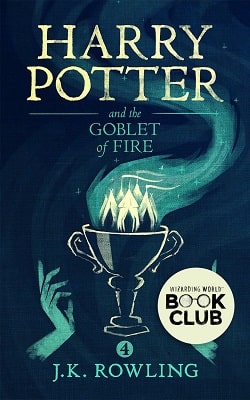“Yes,” Vasya said. “She does.”
“And that is why Kasyan wanted her?”
Vasya nodded.
Olga fell silent again.
The other two waited.
Olga said, slowly, “Then she must be protected. From the evils of sorcerers, and the cruelty of men both. But I do not know how.”
Another long silence. Then Olga looked up, directly at her siblings. “At least I have you to help me.”
Vasya and Sasha were silent, startled.
Then— “Always,” said Vasya, softly. The morning sun slanted across the burned backs of her hands, and put a little color on Olga’s gray-pale one. Vasya felt as though the light had kindled inside her somewhere.
“There will be time for recriminations later,” Olga added. “But there is also the future to plan for. And—and I love you both. Still. Always.”
“That is enough for one day,” said Vasya.
Olga put out her hands; the other two took them, and they sat a moment silent, while the morning sun strengthened outside, chasing winter away.
AUTHOR’S NOTE
The icy, earthy terrain of medieval Muscovy is not necessarily the most natural setting for a fairy tale. This time and place are brutal, complex, and fascinating, but the fairy-tale form—strong on villains and princesses—does not always leave room for the infinite shades of gray necessary to do this location and time period justice.
It would take a far longer and more ambitious novel than The Girl in the Tower to give a full and vital picture of the wars, the shifting alliances, the ambitions, of the monks, priests, merchants, peasants, princesses, nuns, and faiths that made up this incredible and poorly documented era.
In this book, I have striven for accuracy; I have also tried my best to at least hint at complex depths—of personality and of politics—when I could not delve into them more deeply. I have tried to stay true to the fairy tales that are my source material, but not to lose the texture of a time and a place I have come to love.
I have done my best. For inaccuracies and shortcomings, I apologize.
There are plenty of books out there for those wishing to learn more about the realities of this time period. I would like to recommend the dense and fascinating Medieval Russia, 980–1584 by Janet Martin (2007, Cambridge University Press). I have also benefited from Russian Folk Belief by Linda Ivanits (second edition, Routledge, 2015). The Domostroi is one of a few primary sources—it is a householder’s manual written somewhat later than the events of this novel, around the time of Ivan the Terrible.
Any of these will help those hungry for more historical detail.
As always, thank you all for reading.
A NOTE ON RUSSIAN NAMES
Russian conventions of naming and address—while not as complicated as the consonant clusters would suggest—are so different from English forms that they merit explanation. Modern Russian names can be divided into three parts: the first name, the patronymic, and the last, or family, name. In medieval Rus’, people generally had only a first name, or (among the highborn) a first name and a patronymic.
First Names and Nicknames
RUSSIAN IS EXTREMELY RICH in diminutives. Any Russian first name can give rise to a large number of nicknames. The name Yekaterina, for example, can be shortened into Katerina, Katya, Katyusha, or Katenka, among other forms. These variations are often used interchangeably to refer to a single individual, according to the speaker’s degree of familiarity and the whims of the moment.
Aleksandr—Sasha
Dmitrii—Mitya
Vasilisa—Vasya, Vasochka
Rodion—Rodya
Yekaterina—Katya, Katyusha
Patronymic
THE RUSSIAN PATRONYMIC IS derived from the first name of an individual’s father. It varies according to gender. For example, Vasilisa’s father is named Pyotr. Her patronymic—derived from her father’s name—is Petrovna. Her brother Aleksei uses the masculine form: Petrovich.
To indicate respect in Russian, you do not use Mr. or Mrs., as in English. Rather, you address someone by first name and patronymic together. A stranger meeting Vasilisa for the first time would call her Vasilisa Petrovna. When Vasilisa is masquerading as a boy, she calls herself Vasilii Petrovich.
When a highborn woman married, in medieval Rus’, she would exchange her patronymic (if she had one) for a name derived from her husband’s name. Thus Olga, who was Olga Petrovna as a girl, has become Olga Vladimirova (whereas Olga and Vladimir’s daughter is called Marya Vladimirovna).
GLOSSARY
BABA YAGA—An old witch who appears in many Russian fairy tales. She rides around on a mortar, steering with a pestle and sweeping her tracks away with a broom of birch. She lives in a hut that spins round and round on chicken legs.
BANNIK—“Bathhouse dweller,” the bathhouse guardian in Russian folklore.
BATYUSHKA—Literally, “little father,” used as a respectful mode of address for Orthodox ecclesiastics.
BOGATYR—A legendary Slavic warrior, something like a Western European knight-errant.
BOYAR—A member of the Kievan or, later, the Muscovite aristocracy, second in rank only to a knyaz, or prince.
BUYAN—A mysterious island in the ocean, credited in Slavic mythology with the ability to appear and disappear. It figures in several Russian folktales.
BYZANTINE CROSS—Also called the patriarchal cross, this cross has a smaller crosspiece above the main crossbar, and sometimes a slanted crossbar near the foot.
CHUDOVO—A fictional town on the bank of the upper Volga. Its name is derived from the Russian word chudo, miracle. There are several towns called Chudovo today in Russia.
CHYERTI (SINGULAR: CHYERT)—Devils. In this case a collective noun meaning the various spirits of Russian folklore.
DOMOVOI—In Russian folklore, the guardian of the household, the household-spirit.
DVOR—Yard, or dooryard.
DVOROVOI—The dooryard guardian of Russian folklore.
ECUMENICAL PATRIARCH—The supreme head of the Eastern Orthodox Church, based in Constantinople (modern Istanbul).
GAMAYUN—A character in Russian folklore that speaks prophecy, generally depicted as a bird with a woman’s head.
GOLDEN HORDE—A Mongol khanate founded by Batu Khan in the twelfth century. It adopted Islam in the early fourteenth century, and at its peak ruled a large swath of what is now Eastern Europe, including Muscovy.
GOSPODIN—Form of respectful address to a male, more formal than the English “mister.” Might be translated as “lord.”
GOSUDAR—A form of address akin to “Your Majesty” or “Sovereign.”
GRAND PRINCE (VELIKIY KNYAZ)—The title of a ruler of a major principality, for example Moscow, Tver, or Smolensk, in medieval Russia. The title tsar did not come into use until Ivan the Terrible was crowned in 1547. Velikiy Knyaz is also often translated as Grand Duke.
GREAT KHAN—Genghis Khan. His descendants, in the form of the Golden Horde, ruled Russia for two hundred years.
HEGUMEN—The head of an Orthodox monastery, equivalent to an abbot in the Western tradition.















